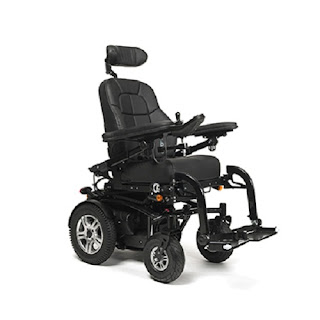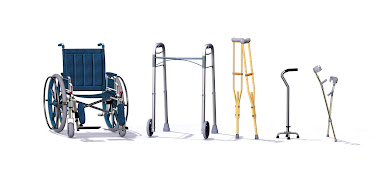Why Wheelchair Accessibility Matters? Breaking Barriers For All
Wheelchair accessibility is an important topic of discussion in today's society. It has become a necessity for many people who are unable to walk on their own due to physical or mental impairments.
The ability to be mobile and independent is vital for social and emotional well-being, but Lightweight Manual Wheelchair also allows people with disabilities access to things such as restaurants, parks and other public places where they might not otherwise be able participate in these activities.

Promoting Inclusivity
Wheelchair accessibility ensures that individuals with mobility limitations can fully participate in various aspects of life, such as education, employment, social activities and public spaces. It breaks down barriers and fosters a more inclusive society for all.
Wheelchair nz provide essential mobility for people with disabilities in their homes or at work environments.
They also allow those who are unable to use stairs safely to have access to their homes without having to worry about tripping over steps or finding alternate routes around obstacles such as doorways that would be inaccessible if not for wheelchairs (such as when entering an apartment building).
Enhancing Independence
Accessible wheelchair infrastructure empowers individuals with mobility challenges to navigate their surroundings independently. It allows them to move freely, access buildings, use public transportation, and engage in daily activities without relying on constant assistance.
Accessible facilities can help people with disabilities live independently and achieve their highest level of independence and quality of life possible. The goal of accessible design is to minimise barriers to mobility by providing an environment that promotes accessibility for all users regardless of ability level or disability status.
Safety and Emergency Preparedness
Wheelchair accessibility is crucial for safety and emergency preparedness. It ensures that individuals with mobility limitations can safely exit buildings during emergencies, access evacuation routes, and receive appropriate assistance if needed.
These features can help save lives by providing access to stairways and exits in case of an earthquake or other natural disaster; they also allow people who have difficulty getting out of their homes due to medical conditions (such as dementia) to find safe shelter during severe weather events such as hurricanes.
Finally, they facilitate easy navigation through crowded areas such as airports so that staff members do not have to worry about being unable to help someone who needs assistance in an emergency situation.
Social and Emotional Well-being
Wheelchair accessibility plays a significant role in the social and emotional well-being of individuals with mobility limitations. It allows them to engage in social interactions, maintain connections with friends and family, participate in community events, and enjoy recreational activities, fostering a sense of belonging and overall happiness.
In addition to providing opportunities for physical activity—such as playing golf or tennis—accessible spaces can also provide mental stimulation by offering distractions such as bookshelves full of novels or art galleries where people can spend time looking at paintings or sculptures that they would never see if they lived somewhere without an elevator.
Conclusion
Wheelchair accessibility is a matter of equality, inclusivity, safety and social and emotional well-being. When you understand these benefits and how wheelchair nz access can benefit you, it’s easy to see why wheelchairs are an essential part of your life today—and will be for years to come!



Comments
Post a Comment